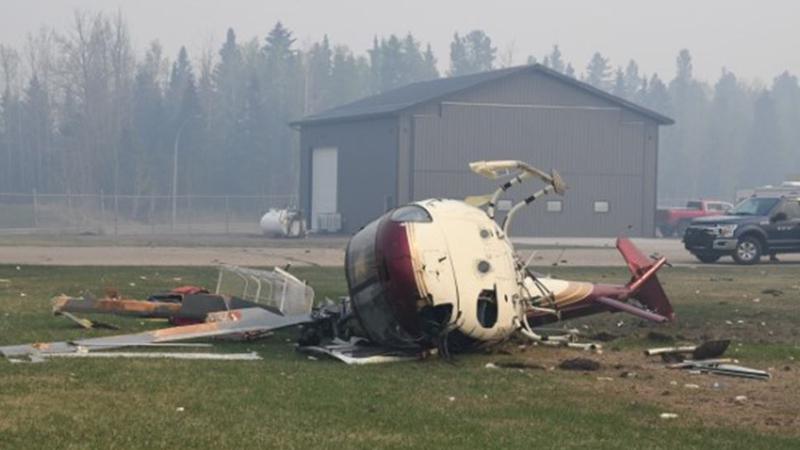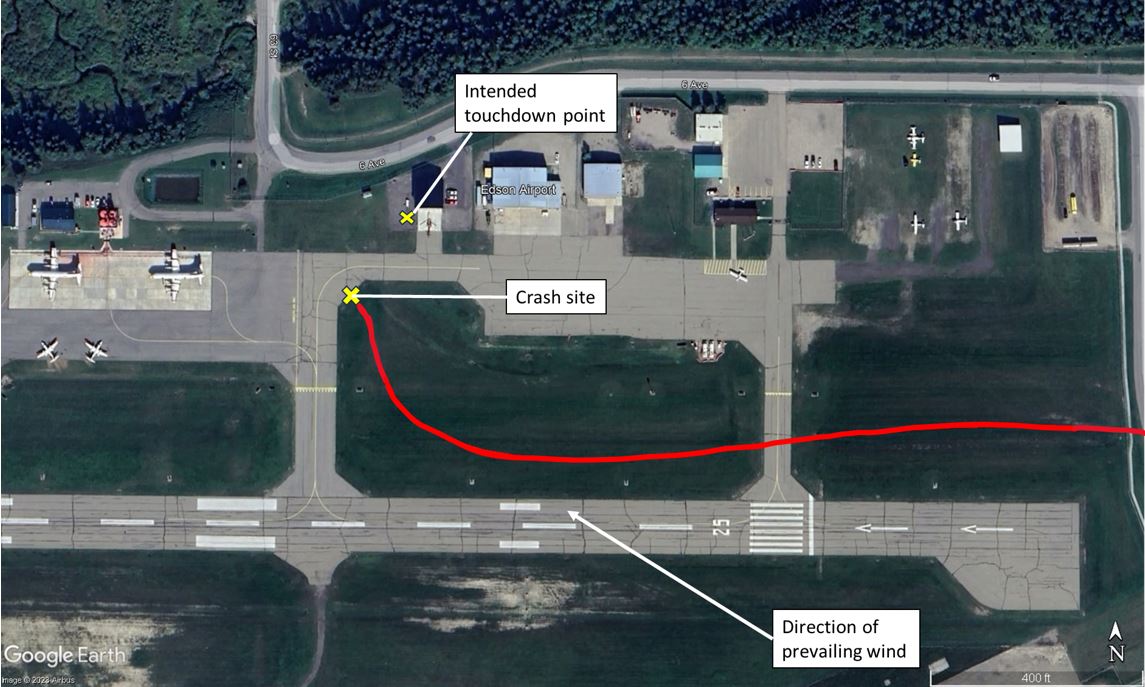
TSB concludes investigation into Edson helicopter crash during wildfire efforts
The Transportation Safety Board (TSB) has deemed that an aerodynamic phenomenon called Vortex Ring State (VRS) caused a helicopter to crash at Edson Airport (CYET) last May, during the height of the wildfire crisis.
rdnewsNOW reported May 5, the day after the incident, that a helicopter had crashed just after 8 p.m., with the pilot suffering only minor injuries.
Dramatic video obtained by rdnewsNOW shows the AS350 B2 helicopter rolling onto its side while landing.



